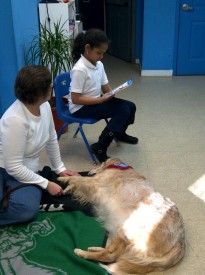
https://vimeo.com/20200250]
Every neighborhood in Philadelphia has undergone changes over time. In a lot of places, the changes have been for the worse. Buildings became abandoned, undesirables move into the area and soon enough the neighborhood gets a bad reputation that seems unshakable. A large portion of Fairhill once experienced such decline even getting slapped with the tag “The Badlands” for the criminal elements once rampant through much of the neighborhood.
One street corner in particular was so notorious for crime it became the subject of a novel by author Steve Lopez. “Third and Indiana” tells the story of a 14-year-old runaway boy named Gabriel who ends up selling drugs in the neighborhood. Five blocks away from the real-life infamous intersection at Howard and Tioga Streets is Centro Nuevo Creacion, or The New Creation Center. Founded in 1994 around the time Lopez wrote his book New Creation’s has sought to make a difference in the lives of children in the neighborhood while trying to keep them from continuing the vicious cycle of criminality that plagues many youths. The mission has been to keep the young children from becoming the next Gabriel.

The center’s program has taken students from the nearby William Kramp Elementary School and offered them different after-school educational enrichment activities ranging from poetry to music to gardening. “The program is very essential to the community,” said Angela Jubinville, the executive director of New Creation. She joined the program in 2007 from Americorps and was promoted to executive director in 2008. Jubinville said the program has grown from 35 to 55 participants since its inception which she said shows that the program is clearly embraced and needed in the community.

The afternoon sessions start with a nutritious snack. After that the children begin their activities. One of the most popular activities offered in the program has been photography. This initiative named “The Goodlands” in response to the moniker given to the neighborhood because of the crime that once plagued it, the photography program has encouraged children to go out and take pictures of different scenes throughout the community. Jubinville said the program, which began in 2000, has often counted on professional photographers to volunteer their time in order to help the children learn the different aspects of good photography.
The photographs are later reviewed as a group and each child is encouraged to talk about why they took that particular photograph and do a self-critique of it. In the past Jubinville and the staff have chosen the best pictures for public exhibition online and at events throughout Philadelphia, including the summer photography exhibit at the Crane building in Fishtown. The photographs are used to bolster the public opinion of the neighborhood as well as to allow the children a chance to learn about the profession of photography.
Once a month there are visits from therapy dogs and their owners. These dogs give the children the opportunity to read to the dogs as well as pet them. These dogs give the children the opportunity to build and strengthen their reading skills as well as their confidence.

Other activities have included arts and crafts. Recently, the children traveled to a clay studio in Center City and learned how to build clay figures. The students have also participated in discussions that emphasize new things they learn in their regular schooling. Lately, these topics have included weather patterns, the significance of recycling and leadership skills. For some of the school-related skills, Jubinville and her colleagues have taken a hands-on approach to learning. Every Spring the children have been taken out into the center’s garden and taught how to care for the plants from planting time through harvest that they cannot do in the classroom.
Group leader Maribel Lozada Arzuaga stressed the importance of reinforcing what students learn in the classroom. “We also help them with homework [and] do the best we can.” Arzuaga added that she has seen firsthand what a program like this can do for young children. “My kids grew up in this community too. They were always in after school programs and now are successful adults. They are not into crime [or] drugs and are focusing more on their families and their work.”
The program cost for families is only $5 per week per child in order to allow low-income households to take advantage of this program’s positive effects on children in the neighborhood. It accepts children from between the ages of five and 11 years old. Arzuaga stressed that the center has been in constant need of donations, citing its limited budget and necessity for work materials.
It has been the center’s hope that the neighborhood of Fairhill will one day finally be known as “The Goodlands.”


Be the first to comment